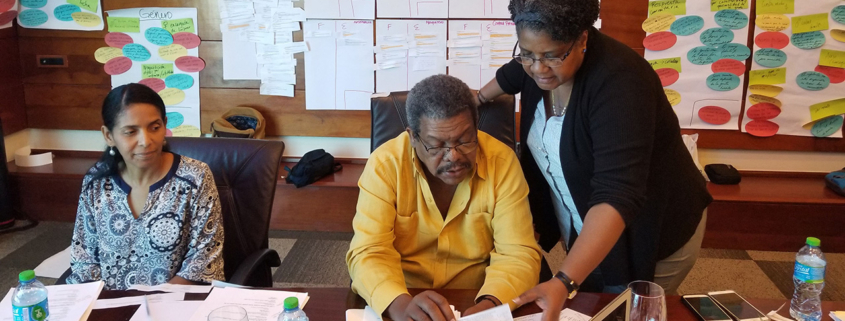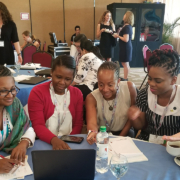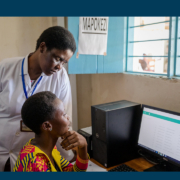Richer and Faster Data Analysis to Inform SBC Zika Program Design in an Outbreak
Written by: Anne Ballard Sara, Program Officer II; Tilly Gurman, Senior Research and Evaluation Officer; Sean Maloney, Program Officer; and Gabrielle Hunter, Zika Technical Team Lead, Breakthrough ACTION
Despite the need for quick action during an outbreak response, taking the time to conduct rigorous formative qualitative research ensures actionable recommendations and stronger social and behavior change (SBC) activities. Employing participatory techniques to analyze the resulting data further helps ensure contextually appropriate results and expedites the dissemination of actionable results. As part of Breakthrough ACTION qualitative research activities, we used participatory data analysis to support the United States Agency for International Development (USAID) Zika response in El Salvador and the Dominican Republic.
Through focus groups and in-depth interviews, we explored perceived risk, feasibility, and effectiveness of Zika prevention behaviors among pregnant women, non-pregnant women, and male partners of pregnant women. (See the final reports from the Dominican Republic and El Salvador for more details on these data collection techniques, as well as the findings.)
We employed a participatory data analysis process that engaged local researchers, Breakthrough ACTION program and research staff, and USAID implementing partners—namely, Save the Children in the Dominican Republic and the United Nations Children’s Fund (UNICEF) and Medical Care Development International (MCDI) in El Salvador. Breakthrough ACTION facilitated a multi-day workshop in each country to systematically generate insights from the research data. The workshop used the 1-2-All facilitation technique, a modified version of the 1-2-4-All technique:
1: Prior to the workshop, two individuals independently reviewed the same subset of data, which had been previously coded with preliminary themes. They worked alone to review the data from the same study participant group (i.e., pregnant women, non-pregnant women, or male partners).
2: During the workshop, the two individuals who reviewed the same data subset shared and discussed the themes they identified and generated a combined set of themes.
All: The pairs then presented their themes to the larger group. During this step, the group identified similarities and differences across participant groups and behaviors. Participants repeated this critical and cross-cutting reflection for all behaviors.
The variety of stakeholders in these data analysis workshop contributed to the richness and validity of findings. The in-country data analysis workshop culminated in a one-day meeting to present preliminary findings to USAID and other partners. At the meeting, Breakthrough ACTION presented the findings and engaged key actors to provide feedback and help us define practical and useful recommendations.
Based on this experience, Breakthrough ACTION recommends the following for research studies that are carried out during future outbreak responses:

Participant in a Breakthrough ACTION data analysis workshop in the Dominican Republic examining Zika research results. Photo credit: Anne Ballard Sara, June 2018
- Incorporate participatory data analysis approaches in order to yield richer and timelier results grounded in the local context.
- Partner with in-country researchers and implementing partners in a rigorous multi-day data analysis workshop to ensure findings are appropriately interpreted and are actionable to implementers.
Rapid rigorous data analysis is especially important during an outbreak response when speed is of the utmost importance for program implementation. Using the 1-2-All technique, Breakthrough ACTION was able to foster genuine collaboration with local partners and rapidly analyze, synthesize, and present actionable findings only two months after data collection.

 Anne Ballard Sara/Breakthrough ACTION
Anne Ballard Sara/Breakthrough ACTION Poravute/Getty Images
Poravute/Getty Images Sean Maloney/Breakthough ACTION
Sean Maloney/Breakthough ACTION K4Health
K4Health
 Rachel Chilton/USAID/Flickr
Rachel Chilton/USAID/Flickr Daniel Schludi/Unsplash
Daniel Schludi/Unsplash